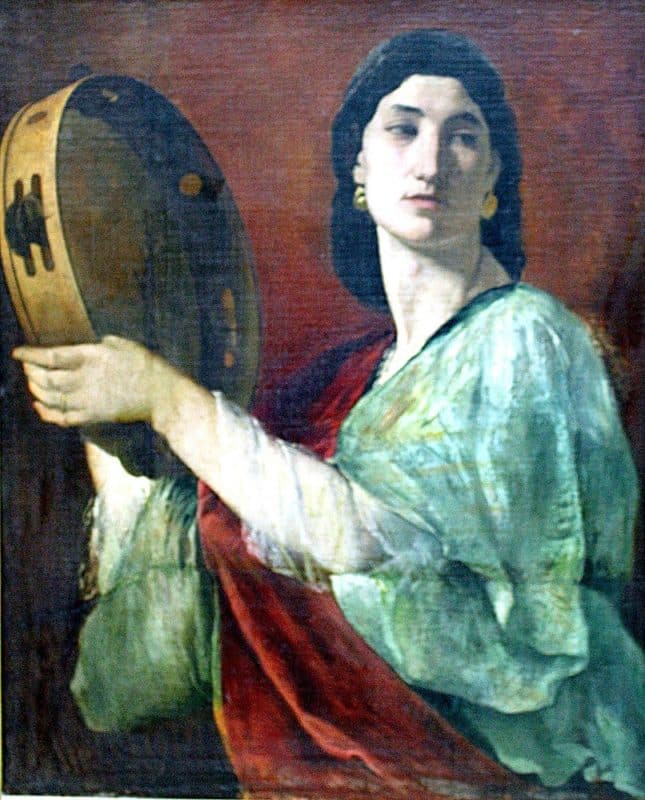Women were depicted as weak creatures in the Old Testament, but through their faith they were made strong by God to save their people.
At a Zoom presentation held by Titipounamu Study and Joy, Br Kieran Fenn, FMS, discussed three women in the Old Testament: Miriam ( sister of Moses), Judith and Esther.
Br Kieran said that Judith and Esther’s stories are called didactic works, which aim to teach a lesson.
“The choice of a ‘weak woman’ as the instrument of salvation highlights the power of God,” Br Kieran said.
He also pointed out that, in the case of the story of Judith, “it [has] rarely ever been suggested that the author of the book was a woman”.
Miriam, the Prophet
Br Kieran said that Miriam was the first female prophet.
“The presence of women prophets is an important feature of the Scriptures,” he said, citing other women prophets, Huldah (Old Testament) and Anna (New Testament).
She started out as the unnamed sister of Moses who watched her little brother float on the river Nile to the daughter of the Pharoah. She also offered to find a Hebrew woman to nurse the baby, thus reuniting Moses with his mother.
“Miriam is called a prophet, but her actions don’t follow the patterns of speech generally associated with Israelite prophets. They do, however, suggest rituals, ecstatic dancing and so on . . . because that actually, is part of prophecy,” he said.
Br Kieran said that, after the crossing of the Red Sea, Miriam, the prophet, led the women in a victory song.
“And Miriam sang to them, ‘sing to the Lord for he has triumphed gloriously’,” he said. “Even though it is called the Song of Moses, most Scripture scholars are now saying that this is the Song of Miriam . . . as Moses became more and more important, the song was given over to him.”
Br Kieran said that what Miriam does is interpret God’s action of deliverance. “That’s a prophetic action,” he said.
However, Miriam’s fall came when she challenged Moses for choosing a Cushite wife, but the issue goes beyond this.
“It’s about prophetic authority. Miriam believes God has spoken, not only through Moses, but also through her and Aaron . . . the stress is on Moses’ unique authority,” he explained.
However, Br Kieran said that, beyond Exodus and Numbers, Miriam is remembered as part of the trinity of leaders, along with Moses and Aaron, and for leading the song and dance after the crossing of the Red Sea.
Judith, the Courageous
The story of Judith is “ambivalent”, according to Br Kieran.
“It is not an historical story. It is a story that would teach courage and wisdom,” he said. “God delivers God’s people when they cry to God, bringing low the arrogant by the hand of a woman.”
The grisly tale depicts Judith as a woman who uses her beauty and charm to kill the Assyrian general, Holofernes, thus saving her people from oppression. In this story, after a night in Holofernes’ bed, Judith beheaded the sleeping enemy, and brings his head to her people.
“Feminists criticise her blatant use of her beauty and sexual wiles,” he said. “But she’s a very intelligent woman.”
Br Kieran pointed out that Judith was a widow, considered powerless in society. However, she was rich, kind, God-fearing and beautiful, and she fasted and observed all Jewish festivals.
When Holofernes cut off her people’s water supply, they became desperate, asking God for rain within five days. “However, Judith understands that the ways of God are often surprising,” Br Kieran said.
Judith’s ways may horrify modern readers, he said.
“The imagery, the characters and the plot belong to a particular culture and era, and to their way of telling a story. But the underlying struggle to be faithful to one’s true religious identity, no matter how crushing the odds or insidious the obstacle, belongs to every generation,” Br Kieran said.
Esther, the Queen
Esther, on the other hand, is a beautiful young woman, who was first passive, but later came to her own power as a faithful Jewish woman and Persian queen.
“The threatened destruction of her people brings her to full development. This is seen in her brave approach to the king to plead for her people,” he said.
Through Esther’s action, the wicked plot that would have seen her people killed rebounded to their enemies.
Br Kieran noted that Esther was the inspiration of Jewish Deborah Lipstadt, who famously won a libel case against Holocaust denier, David Irving, in 2000.
“Lipstadt’s moment in history was unusual, but her reaction to the book of Esther was not. People of faith, Jew and Gentile, have found something in this book that makes us take stock of ourselves and wonder what God is up to,” he said.

Reader Interactions